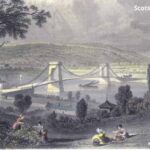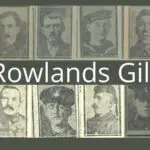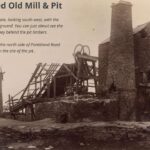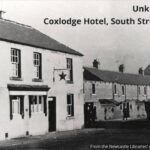Glimpse history through old images of Winlaton, in North East England.
Winlaton is a historic settlement on a hill, first mentioned on a document from 1083, in which Meldred received the Manor of Wynlaktona in a land-swap with William de St, Callais, the Bishop of Durham. The
The village was greatly expanded throughout the twentieth century, and now merges into Blaydon-on-Tyne. Therefore, you might also be interested in the page showing old images of Blaydon.
If you are interested in finding out more about Winlaton’s rich and varied history, try tracking down some old copies of T.R. Hodgson’s beautifully handwritten books, published at the turn of the 21st century.
Winlaton Cottages
Traditionally, Winlaton’s cottages and businesses were built piecemeal and mixed together along roads and alleyways, with some forming industrial squares where families both lived and worked.
A number of upper storey homes were accessed from outside staircases. These appear in old drawings, and you can see the end of their era later down this page, as they were photographed during demolition in the 1960s.
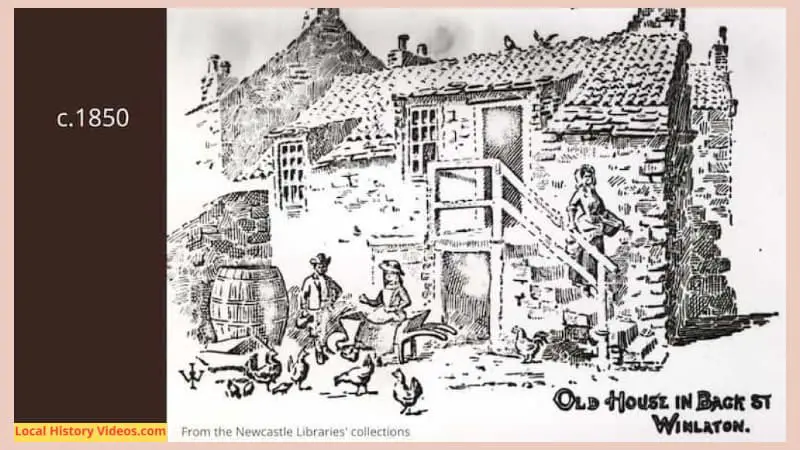
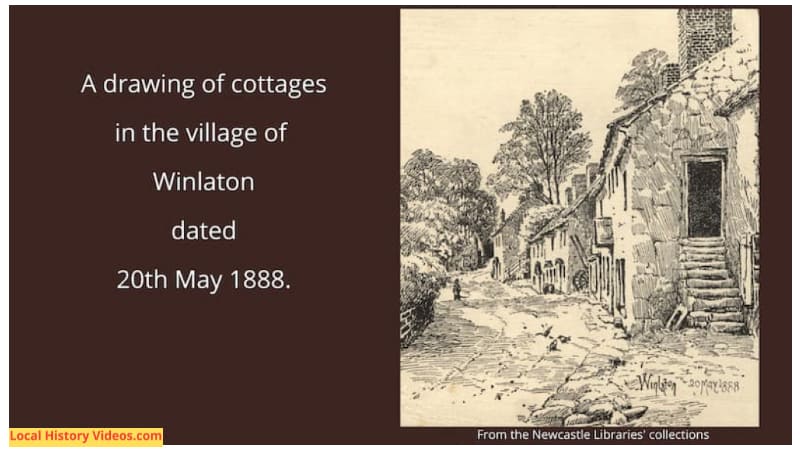
Front Street
This first photo of Front Street, taken around 1900, looks towards Sandhill. Enough of these buildings still survive that the street is instantly recognisable.
There are a lot of details in this early image, so I’ve added three closeup images.
You’ll notice the elegant streetlamps, the well stocked shop windows, and the dogs wandering loose.
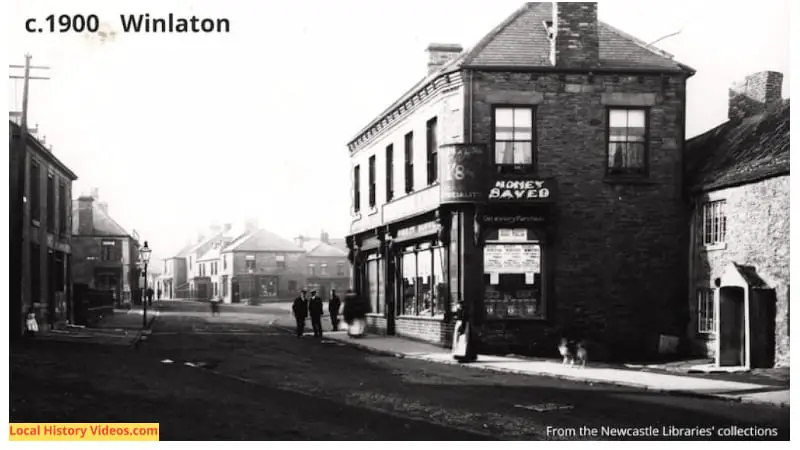
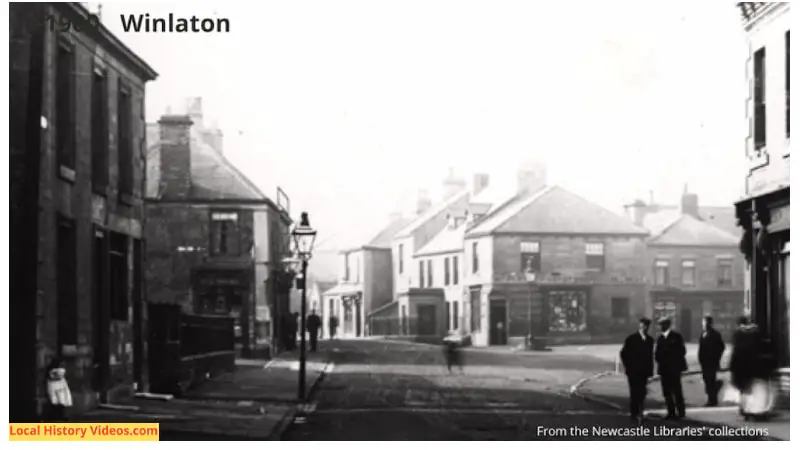
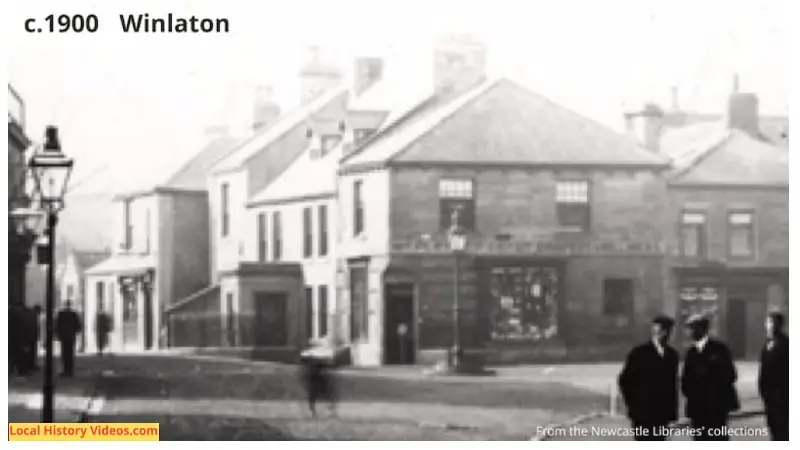
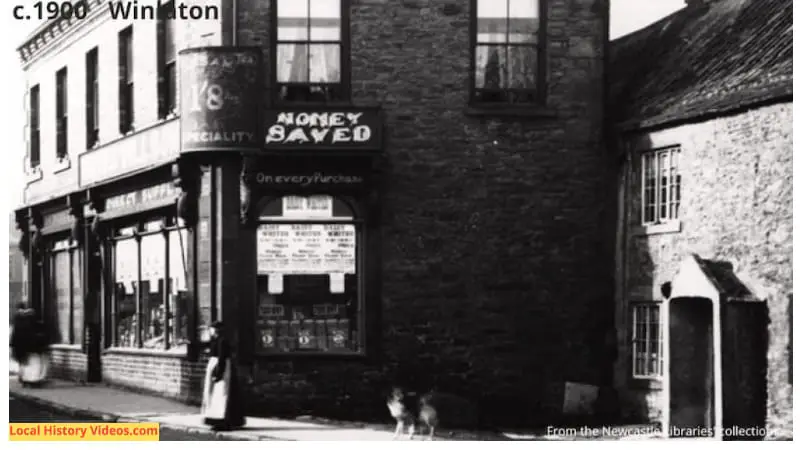
This second photo of Front Street is taken from Sandhill, looking down the same street from the opposite direction from the photo above. If the photographer had moved back a few steps, we would also have seen the Smith’s Arms on the right.
It’s much harder to recognise this as Front Street because the majority of these buildings were torn down by the end of the 1960s.
Again, there is so much detail that I’ve added three closeup images.
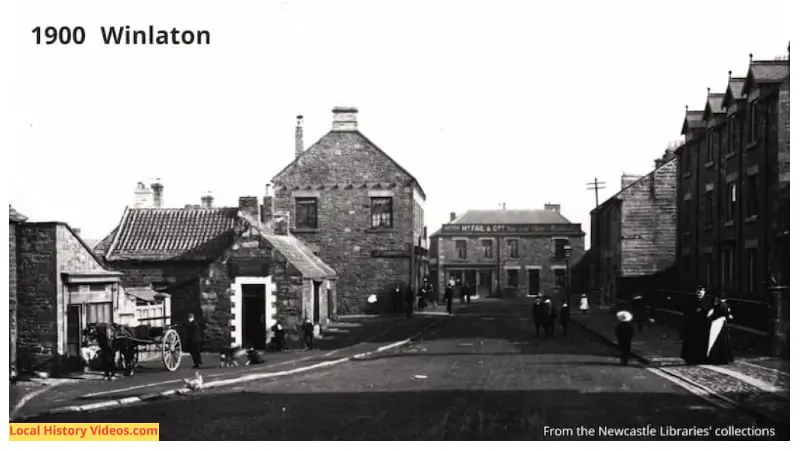
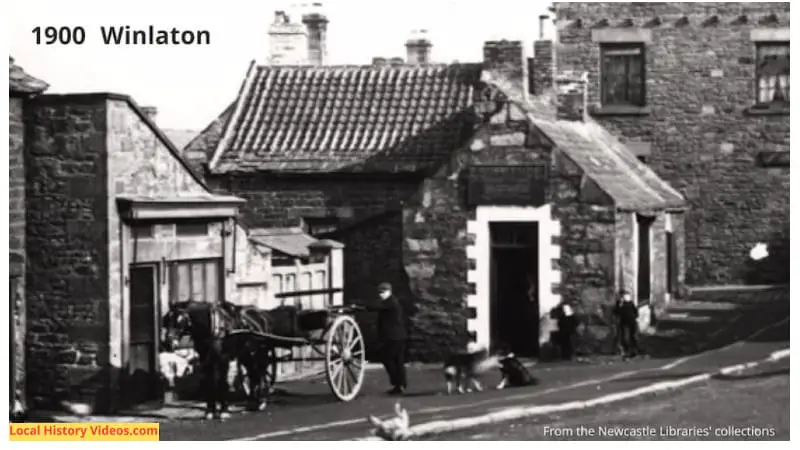
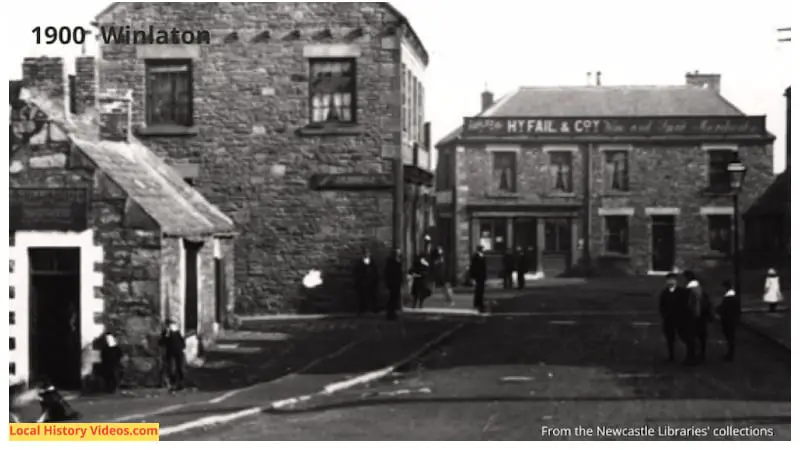
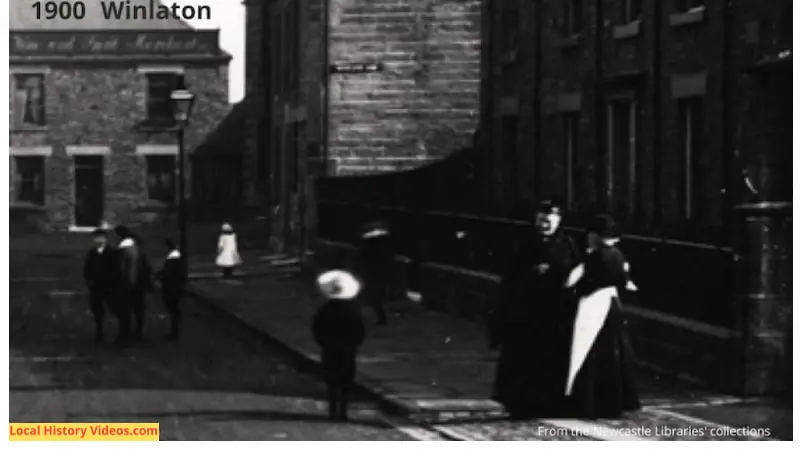
Blaydon Urban District Council
Blaydon Urban District Council was created in 1894, encapsulating Blaydon, Winlaton, Rowlands Gill and High Spen, and Chopwell.
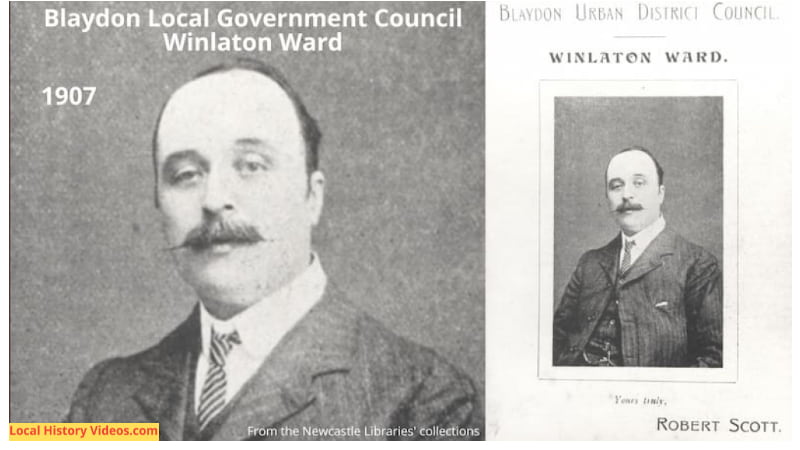
The council’s boundaries had changed little when Dorothy C. Galleymore wrote her Durham University MA Thesis about the district in 1967, even though the area had suffered progressive population decline from 1921 onwards.
Today, the area is part of Gateshead Council.
Winlaton’s Sword Dancers (Rappers)
Dancing with swords, known as Rapper Dancing, is a tradition from Tyneside and County Durham’s pit villages of the 1800s, which is still enjoyed today by groups in North East England. (If you know which local pubs to head for on St. George’s Day each year, you can find some of the area’s best rapper dancers and musicians performing in the tiniest of spaces).
Years ago, Winlaton’s rapper dancers, at first made up of working minors, and then extending out to include teams of young women, were famous enough to draw the attention of the newsreels.
The first (and silent) newsreel is from 1926, featuring a group whose YOUNGEST member was over 60, showing them preparing for the 1926 All-England Folk Dance Festival.
You can see some buildings in the background – there seems to be a derelict roof further back. The man with the stick did sterling work keeping the mischievious children under control!
Miner Dancers (1926) – British Pathé on YouTube
And the newsreel men were back to film the same preparations in 1930, this time with sound.
The tiny tot was brave standing his ground with that scary lineup of men with swords advancing towards him!
Mr Frodo, in the tall hat, was 73 years old, and the combined ages of the dancers totalled 455 years.
According to the ONS, life expectancy of men in the UK in 1930 was just 58.7 years.
The man in women’s clothing may be playing the character of Betty, also known as Bessy, who dances along and is a character pairing with Tommy, the instructor.
The children are a bit less troublesome this time, and we even hear them happily chuckling.
However, we see a grown man gently push a little girl to one side, even as she diligently holds a heavy baby on her shoulder, so that he can be seen by the camera.
Miner Dancers (1930) – British Pathé on YouTube
Chainmakers
The ironmongery trade became an important part of the local economy, when Ambrose Crowley set up his industrial premises in the village in 1690. Surrounded by local coal pits and good transport links, it was an ideal place to make nails, chains, and other iron products.
Chains were made in Winlaton for hundreds of years, in stone built factories which became derelict and then disappeared over the course of the twentieth century.
Even the site where the community comes to enjoy activities at the Winlaton Centre was once a chainmaking factory, owned by the Bagnall family.
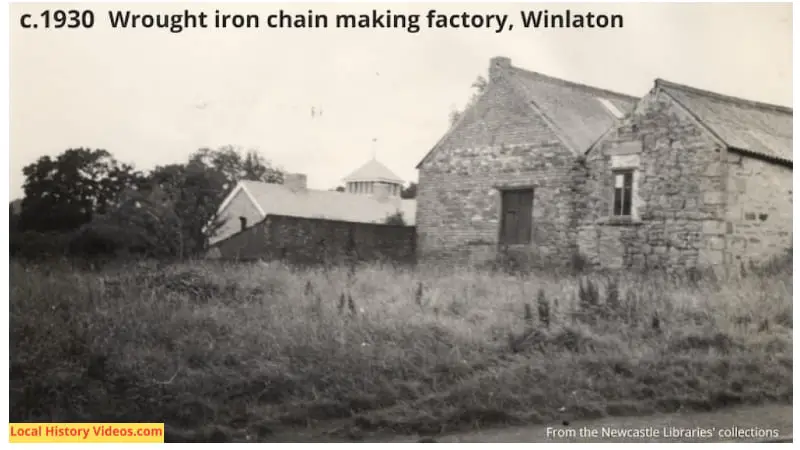
Parliament Street
On 26th August 1918, John H. Tweddle was mortally wounded during active service in France. Before the Great War he had been a plumber living with his parents and siblings at 10 Parliament Street. He is one of the local war casualties introduced in the Winlaton War Memorial Project, compiled by the Winlaton and District Local History Society.
Sharpes Joinery Works was once a metal smelting forge, a single storey stone building with a wooden extension between Knowledge Hill and Parliament Street.
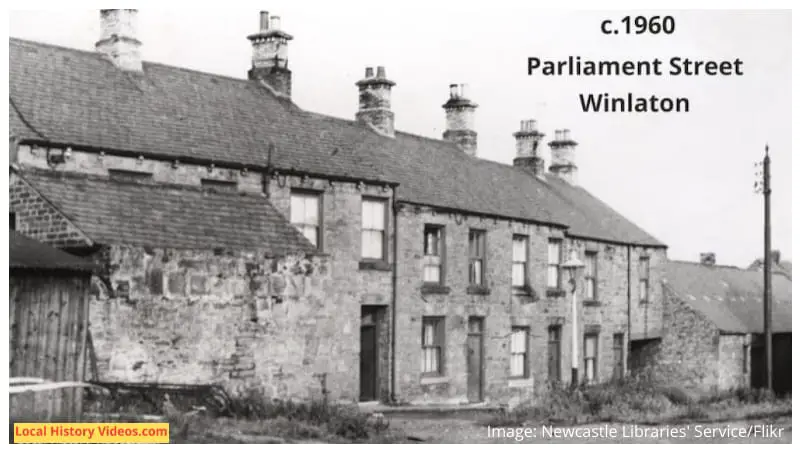
Commercial Square
The interesting row of buildings at Commercial Square have stood the test of time (and town planners), although the pub is now a local vetinary practice.
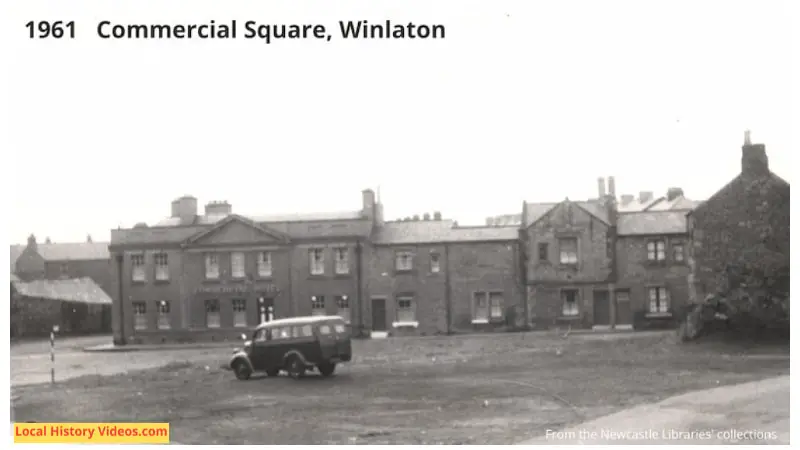
This closeup shows some buildings behind the pub, which were demolished not long after the photo was taken.
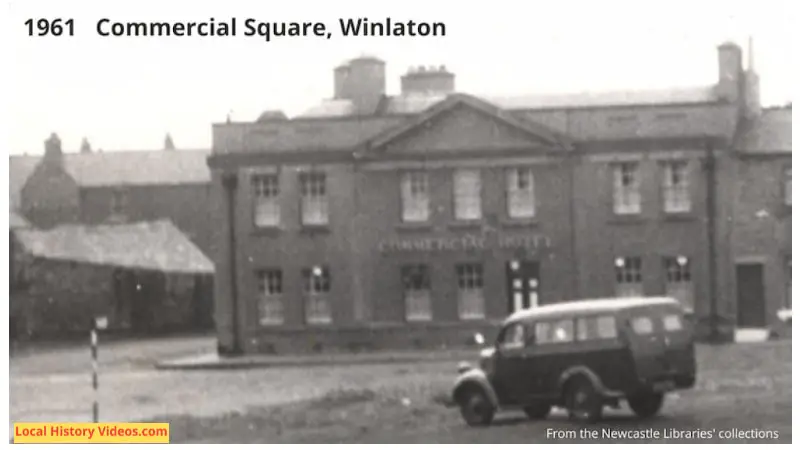
Hood Square
Hood Square was once an industrial square, with gates that closed promptly at 10pm. Any worker not making it home from the pub on time was locked out for the night.
Some of the houses survive, and a forge still stands (behind Winlaton Library), but modern development and roads have decimated the site. It was one of the last industrial squares of its kind left in England when it was destroyed for the road.
This photo of Hood Square, taken in 1963, has a lot of detail from a time when the centre of the village was undergoing a lot of demolition, so I have added two closeups.
Behind, you can see the row of buildings being demolished on Church Street.
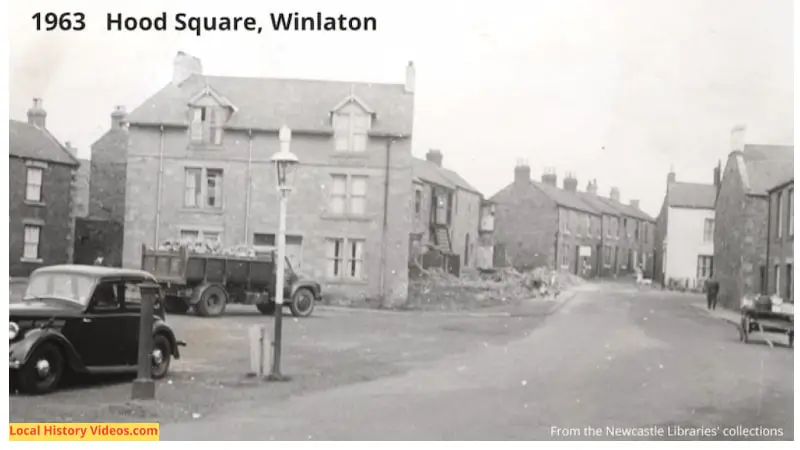
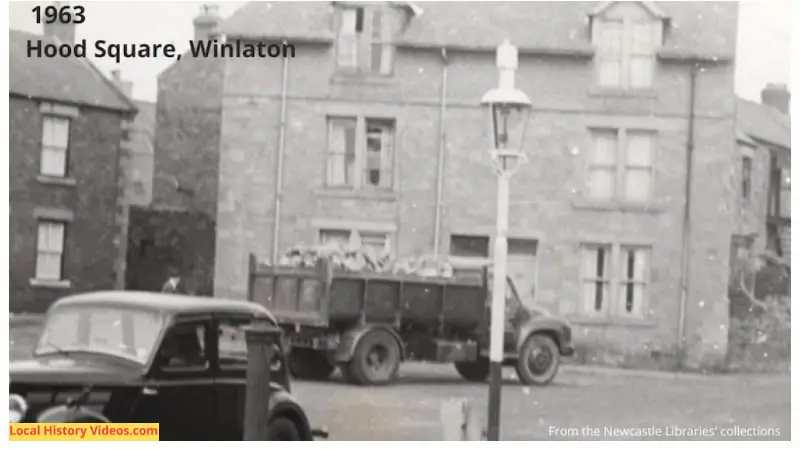
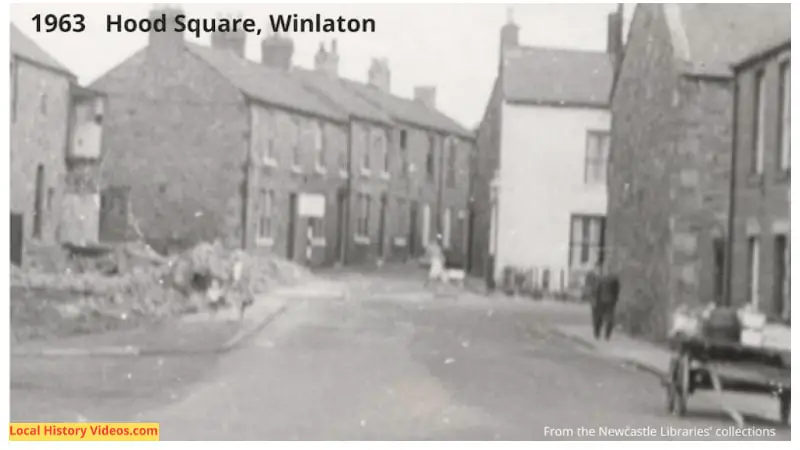
These are the buildings on Church Street which were being demolished in 1963. They are the ones behind the Hood Square house seen in the photos above.
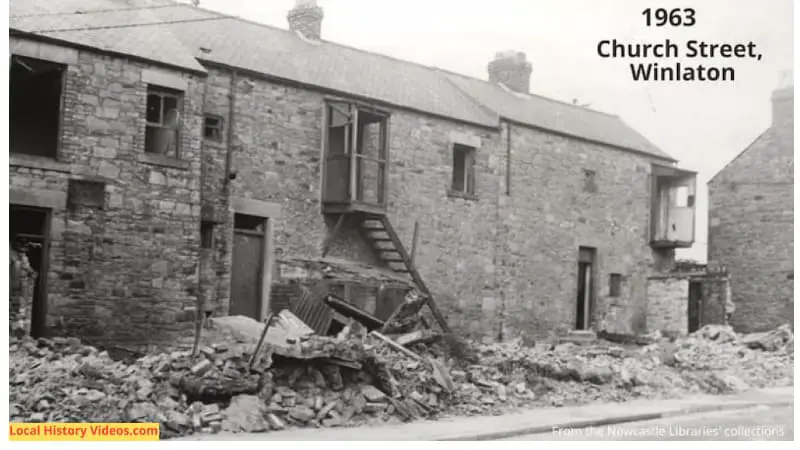
The Vulcan Inn
Vulcan was the Roman god of fire, and all things related to fire, including volcanoes, deserts, metalworking and the forge.
So it was appropriate to name one of the public houses in Winlaton’s industrial village, full of chainmaking works and forges, after this Roman deity.
The original building is the two storey portion to the right. Later, a single storey extension was added to the left.
The Tudor appearance was a modification of the original building, which had a more classic Victorial frontage, and has subsequently been changed again since the 1960s.
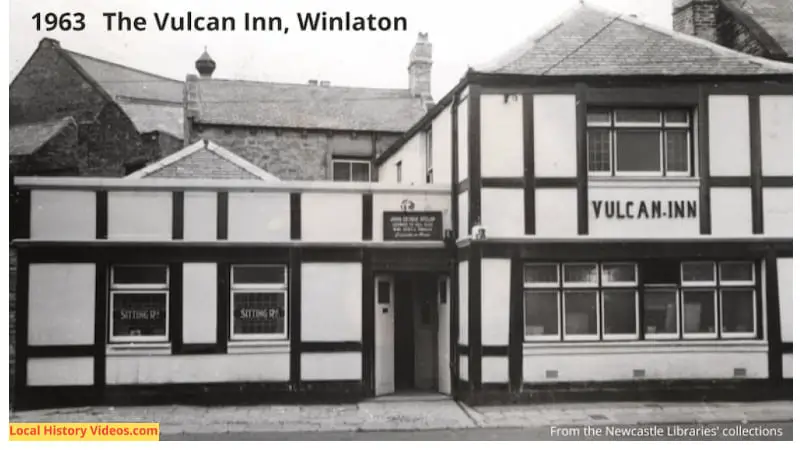
Winlaton Drive 2009
Recorded on a smartphone in 2009 on the drive down to Blaydon, the roads look surprisingly clear of parked cars!
WINLATON TO BLAYDON COMMUTE – FAT FERRIT on YouTube
Dare to Enquire
In 2013, a group of pupils from Winlaton West Lane Primary School were filmed exploring the collection at the Shipley Art Gallery for creative inspiration, as part of the ‘Dare to Enquire’ learning programme.
Dare to Enquire – Winlaton West Lane Primary visit the Shipley Art Gallery – TWMuseums on YouTube
The Post Office Directory of Durham and Northumberland
by Kelly and Company
Published in 1879
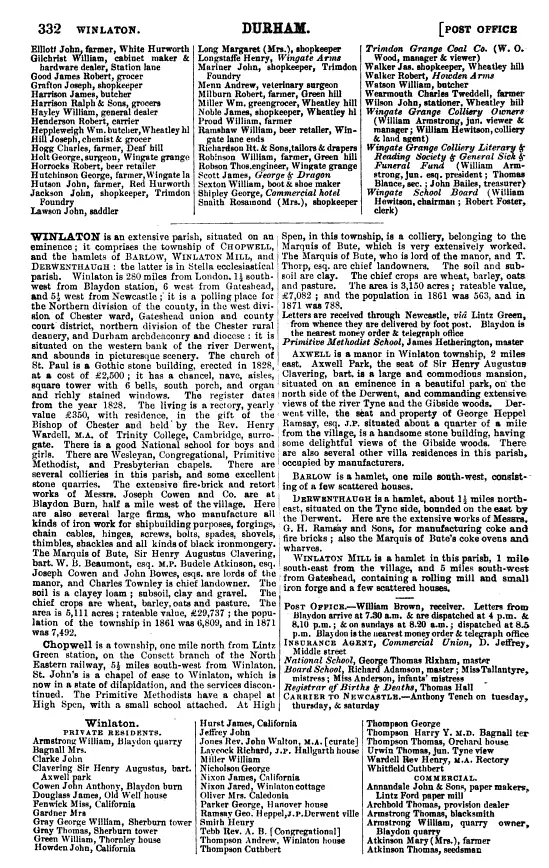

Winlaton Teaset
This teapot, sugar bowl and milk jug belonged to Edith Cherry (nee Whitfield), who grew up in the area before moving to North Shields. Her father ran a newsagents shop in Ryton.
The teapot and sugar bowl have the words ‘Present from Winlaton’ stamped on them.
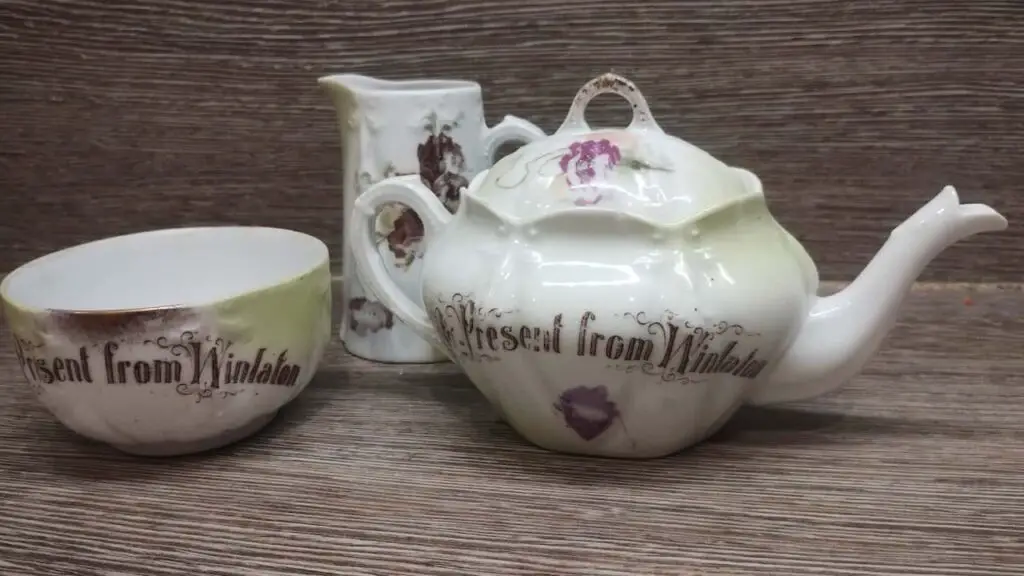
You may also like
More about Tyne & Wear
- A Brief History of Scotswood Bridge (With Old Photos & Film)Glimpse history through old images of Scotswood Bridge, which links the West End of Newcastle and the western fringes of Gateshead.
- A Glimpse of History at Rowlands GillA glimpse of history at Rowlands Gill, in North East England.
- Chirton, North East EnglandEnjoy a glimpse of history about Chirton in North Shields, Tyne & Wear, North East England, UK.
- Cowgate, Newcastle Upon Tyne: History in Old ImagesEnjoy a glimpse of history through old images of Cowgate, in Newcastle upon Tyne, Tyne & Wear, England, UK.
- Coxlodge, Newcastle upon TyneEnjoy a glimpse of history about Coxlodge in Newcastle upon Tyne, Tyne & Wear, North East England, UK.
- Dinnington, Newcastle upon TyneEnjoy a glimpse of history about Dinnington in Newcastle upon Tyne, Tyne & Wear, North East England, UK.
- Earsdon, North TynesideEnjoy a glimpse of history about Earsdon in North Tyneside, Tyne & Wear, North East England, UK.
- East Boldon, West Boldon, and Boldon CollieryEnjoy a glimpse of history about the Boldons in South Tyneside, Tyne & Wear, England, UK.
- East Rainton, SunderlandEnjoy a glimpse of history about East Rainton in Sunderland, Tyne & Wear, England, UK.
- Eighton Banks, GatesheadEnjoy a glimpse of history about Eighton Banks in Gateshead, North East England, UK.

